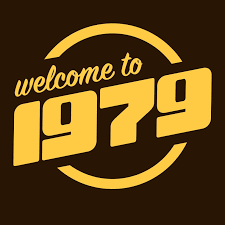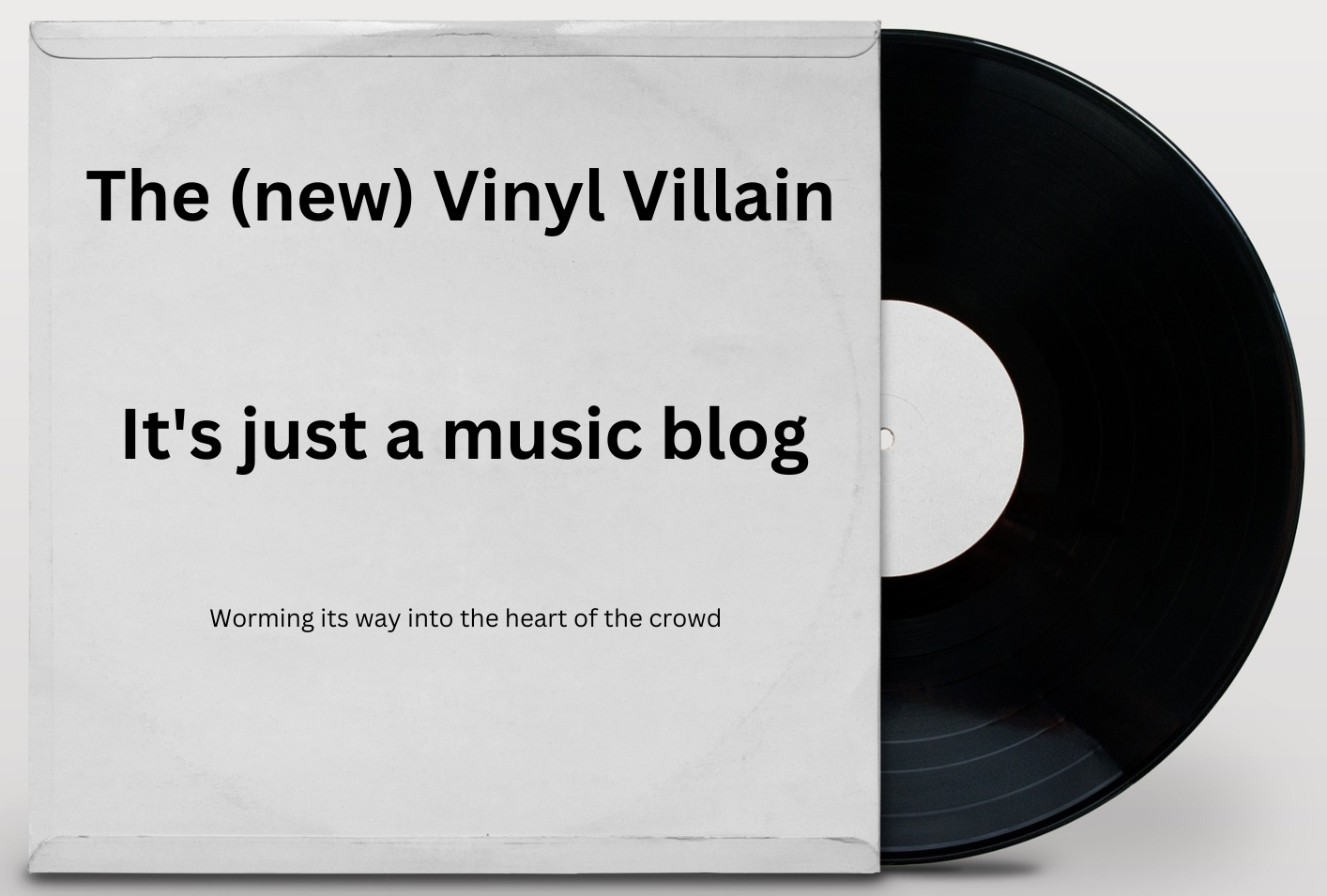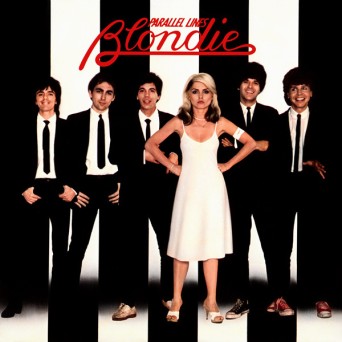
The second successive JC ICA of an act from the teenage years.
Linked in with a guest posting by Walter of A Few Good Times.
It was inevitable that two ICAs would overlap. I’d no sooner made my mind up on mine that Walter’s dropped into my inbox. So here goes with two-for-one. Only 3 songs made both lists…I wonder, before you scroll down, you hazard a guess to what they are and then see if you were right.
JC writes…..
Blondie.
A band with its roots firmly in the NYC punk scene who would, over a six-year period achieve world domination in terms of chart positions and record sales, thanks in part to having a stunning and striking look in an era when video was beginning to become increasingly important to the music industry, but also for the fact that this was a band who never stood still, always surprising fans and critics alike with moves into some different genre than their previous outing.
New wave, pure pop, disco, rap and reggae were all, one point in time or other, utilised to bring success. It wasn’t always the best use of the genres, and indeed in the grand scheme of things the rap and reggae efforts can be seen as a bit to-curling in places, but credit has to be given for trying and for using their position of influence to try to widen the tastes and listening habits of their fans. They are more than worthy of an appearance in this long-running series. Again, what follows is not necessarily my favourite ten Blondie songs, nor their best, but it comes together rather well as a stand-alone album.
SIDE A
1. Hanging on the Telephone (1978)
Parallel Lines, the band’s third LP, has sold more than 20 million copies. Being the archetypal muso-snob, it’s not all that often I find myself raving about a record which has proven to be so popular with the general public, but there are many fantastic moments across its 35 minute duration, not least its opening track. It’s a song which is a nod the band’s roots in terms of its sound, energy and tempo, but it is also an acknowledgment of the fact that many of their peers and contemporaries, whom Chris Stein and Debbie Harry thought were more than worthy, hadn’t been able to keep things going for one reason or another. Not many people outside of LA had likely heard of song composer Jack Lee or his power-pop trio The Nerves until Blondie gave it the cover treatment. It still sounds ridiculously good 40(!!!!) years on.
2. Dreaming (1979)
The band’s drummer, Clem Burke, has always been important to the sound. He’s had to constantly adjust his style to suit whatever genre the band were concentrating on, but there can no arguing that, at heart, he’s just a guy who is at his happiest when he’s allowed to pound away loud and fast, dragging the band along breathlessly in his wake. He’s probably never given as fine a performance as on this hit single from the band’s fourth album, which is fitting given that it seems he came up with the phrase ‘Dreaming Is Free’ around which Debbie constructed the lyric – and I still admire the fact she was able to achieve a rhyming couplet of restaurant and debutante. Genius.
3. In The Flesh (1976)
It’s quite incredible to look back and realise that human error in Australia was responsible for setting Blondie on their way to fame and fortune. The debut album, like many of its type in the mid-70s, was more cult than commercial. It was that transitional period when punk/new wave was finding its feet on both sides of the Atlantic, still a long way from the mainstream and wider acceptance. The biggest pop show on Australian TV at the time was called Countdown and it was one that was ahead of many in airing new sounds by new bands. The plan has been to highlight X-Offender, a new 45 by Blondie but an error was made and the promo for its b-side was played instead and generated a positive response.
It didn’t, however, lead to any huge upsurge in sales, but the following year saw the band’s contract shift to a new label, Chrysalis, where somebody remembered that In The Flesh, a slow number almost reminiscent of many girl groups of the 60s, had gone down well and so it was re-released, this time as an A-side. In November 1977, the song reached #2 in Australia, providing the band with its first ever hit, a full six months before they troubled the UK singles charts.
4. Sunday Girl (French Version)(1979)
One in which the band really sounded as if they were just a backing group for the gorgeous lead singer. This was released in the summer of 1979 when the band had just really taken the UK by storm. It was the fourth single to be lifted from Parallel Lines, some nine months after the album hit the shops, a situation that would normally see a 45 sink without trace with fans refusing to part with hard-earned cash for something they already owned. It was especially so with Blondie as even most of their b-sides tended to be album tracks. Chrysalis came up with a fantastic ploy, namely being to have the 12” of the single come with a new vocal from Debbie, sung entirely in French, recalling the refrain from Denis, their breakthrough UK hit. Not a single adolescent fan could resist, and this rather flimsy sounding yet brilliant piece of pop, written entirely by Chris Stein, raced up the charts to #1.
5. (I’m Always Touched by Your) Presence, Dear (1978)
Gary Valentine is one of the unsung heroes of the Blondie story. He wasn’t the original bass player – that honour went to Fred Smith but he had jumped ship (understandably) when he was asked to join Television after Richard Hell had departed following one too many arguments with Tom Verlaine. Gary Valentine soon immersed himself fully with Blondie, adopting a look the band wanted and contributing a number of full-fledged tunes, including X-Offender which, with a Debbie Harry composed lyric, became was the first ever 45. Another of his compositions, (I’m Always Touched by Your) Presence, Dear was chosen as the follow-up to Denis, and provide the band with its second successive Top Ten hit in the UK. The irony of this was that Gary Valentine had already left Blondie, frustrated in part by an unwillingness to record more of his songs, to be replaced by Nigel Harrison who was there all the way as the stellar ride to stardom gained momentum. He would later, in the 1990s after a move to London, pursue a fairly successful writing career, under his real name of Gary Lachman.
Presence is a fantastic love song, written for his girlfriend of the time on the back of them, despite often being thousands of miles apart while he was touring, having similar types of dreams of an evening, a situation that led him to pen what I’ve long thought as being one of the band’s finest ever moments.
SIDE B
1. Heart Of Glass (1979)
The 12” version of this song is one of the finest pieces of music in my lifetime. It goes on and on and on and on…..and there are days, especially when I’m lying on the beach under a blazing sun, when I feel it comes to a halt all too prematurely. Indeed, on such a day and when I’m in such a mood, I’d be happy to have a 25-minute version of Heart of Glass take up an entire side of an ICA. But such a thing, to the best of my knowledge, doesn’t exist, and so the usual rules will now be applied…..which leads nicely to….
2. Union City Blue (1979)
I wrote about this at length on the blog not too long ago in which I admitted that back in 1979, I wasn’t totally convinced of the merits of this song as its mid-paced tempo and rock rhythm was not exactly what I had come to expect from Blondie. But, now that my tastes have developed and matured, this is up there as one of my all-time favourites. Not only that, but it just sound so good on the back of Heart of Glass and immediately in front of…..
3. 11:59 (1979)
At this point in the ICA, I was torn between including Picture This, which is yet another of my favourite 45s and this, the track that opens side 2 of Parallel Lines. Either song fits in quite perfectly at this juncture, but I swung in favour of 11:59 thanks to the superb organ instrumental bit in the middle of the song, courtesy of Jimmy Destri, the composer of this particular ditty. The keyboards were always there with Blondie, but all to often hidden away beneath the new wave guitars which were so in vogue when the band began to emerge. Can’t explain why, but this track has always seemed to me to be the most NYC of Blondie songs…even though it mentions oceans and the like which is clearly so L.A.
4. Rip Her To Shreds (1976)
An early song. It’s title would have you believe it is an angry punk classic when in fact it is a wonderfully funny, knowing, catchy and catty pop song. It is full of comic-book violence rather than anything real, quite camp in many ways as la Harry sneers at someone who, presumably, is encroaching on her territory. There’s only room for one killer queen on this sidewalk dontcha’ know? It’s another song in which Destri’s keyboard skills are to the fore while the surf-style guitar offerings bring to mind the also emerging at this time, B-52s.
5. Atomic (1980)
BOOM!!!!! The one where new wave met rock met disco in one generous helping. If Blondie had done nothing other than record Atomic, we would be raving about it as a work of distinction and quality all these decades later. It begins with a twanging guitar and it gallops along at a fair face thereafter, every single member of the six-piece band giving their all. It’s the perfect song to close the ICA as all you’ll want to do with the imaginary vinyl record is flip it over and start all over again.
JC
Walter writes:-
Looking back to all the ICA’s that was made by many guest writers I think it is time to feature a band that had their greatest moments in the late 70’s/early 80’s. It is a band I grew up with and accompanied me during the years were many great music was released. Blondie was formed by Debbie Harry and Chris Stein in 1976 as one of the first American punk and new wave band. Following the road The New York Dolls prepared they started with the finest songs that this new genre made in USA. After their first successful steps they added an organ to their sound and in the following years they added disco, pop and reggae to their eclectic sound. So here we go:
Side One
X-Offender (from Blondie)
First released as a single called Sex Offender and later shortened because too many radio stations banned this song mostly in America. Based on the sound of 60’s girl groups harmonies the band crated their very own sound that fit to the upcoming punk and new wave scene. A steady drum and an organ in the background made their trademark in the early days.
Rip Her To Shreds (from Blondie)
Also a song ruled by an organ in the background but with a bit more guitar. This one showed the way Blondie will walk next. The road of power-pop influenced new wave. This songs showed Debbie Harry’s abilities about phrasing and making a simple song great.
Denis (from Plastic Letters)
This was the first song ever I heard from them. As a teenager I was on the move some time with older friends from the biker’s scene and one day in a pub one of these guys dropped a coin in the jukebox and selected Denis. I was fascinated by this sound and couldn’t believe that they knew more than Steppenwolf and Deep Purple. Probably Blondie’s perfectest pop-rock song
(I’m Always Touched by Your) Presence, Dear (from Plastic Letters)
Another song from this album that climbed the charts but it is okay because these songs were the soundtrack on many parties in these days. The song is is because of using more guitars and the more reluctant singing of Debbie Harry more different to the songs before.
Fade Away And Radiate (from Parallel Lines)
With a new producer the left the punk-roots and the three chord songs to create a symbiosis of their roots and popular music. There were more guitars on it and the songs were arranged around Debbie’s voice.
Side Two
11:59 (from Parallel Lines)
Another example why this album reached high positions in the charts. With this song they came very close to the perfect pop song. These are just two songs from an almost perfect album. You can put songs like Hanging on the Telephone, Heart of glass or Sunday Girl at this place and it would be good as well.
Rapture (from Autoamerican)
This is the next step in Blondie’s musical evolution. Leaving punk/new wave/pop behind they now turned into something new. It seem like they have been in many discotheques in New York these days because they integrated influences of funk, jazz, rock and rap into their superb arranged songs. Rapture might be the perfect example for.
The Tide Is High (from Autoamerican)
Blondie were always a band that covered song and made a great job. I didn’t expected that they would make a song by The Paragons a song of their own. Reggae was in 1980 not that popular in mainstream and it is due to Blondie the mass could get in touch with the sound coming from Jamaica.
Call Me (from American Gigolo Soundtrack)
It was the lead song by the movie with Richard Gere. The soundtrack was written and produced by Giorgio Moroder and this song originally planed to be sung by Stevie Nicks. After she declined Debbie Harry took the chance to give this great song the vocals it deserves.
Ring Of Fire (from Roadie Soundtrack)
Blondie made another cover version in Alan Rudolph‘s movie Roadie with the first starring role by Meat Loaf. Never thought that even a song by Johnny Cash could fit to their sound.
Walter
JC : I don’t think anyone would have guessed the three in common were Rip Her To Shreds, (I’m Always Touched by Your) Presence, Dear and 11:59………….


















